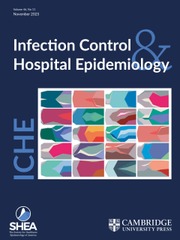Article contents
Contaminated Commercial Charcoal as a Source of fungi in the Respiratory Tract
Published online by Cambridge University Press: 21 June 2016
Abstract
To investigate the possibility that contaminated commercial activated charcoal may serve as a source for fungal colonization or infection of the lower respiratory tract.
The clinical course of a patient who aspirated commercial activated charcoal was reviewed. Fungal cultures were performed for 2 samples of an activated charcoal in sorbitol product from separate lots produced by a single manufacturer. Details of the manufacturing process were obtained from a representative of the manufacturer.
An intensive care unit in a large community teaching hospital.
A single patient with steroid-treated lung disease who developed a fatal pulmonary illness after aspirating a commercial activated charcoal product.
After aspirating the charcoal product, the patient developed respiratory tract colonization and possible infection with Aspergillus niger, Paecilomyces variotii, and Penicillium species. Similar fungal species were isolated from cultures of samples obtained from two separate lots of the same commercial activated charcoal product. Several opportunities for contamination during the manufacturing process were identified.
Physicians caring for immuno-compromised patients should be aware that commercial activated charcoal products can be a source of fungal respiratory tract colonization that may mimic or cause pneumonia.
Information
- Type
- Original Articles
- Information
- Copyright
- Copyright © The Society for Healthcare Epidemiology of America 1991
References
REFERENCES
- 5
- Cited by

